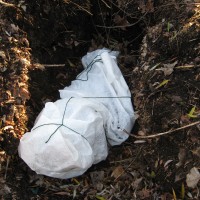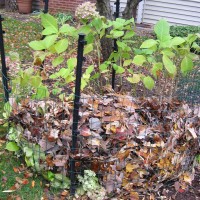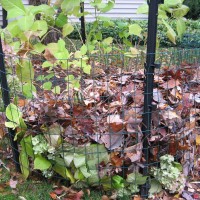Encountering Jesus
In a world of our deepest pain, Jesus meets us. He meets us in the manger of poverty and rejection; in the storms of fear and despair. He meets us in the garden of pain and suffering; outside the tomb of loneliness, and in the emptiness of grief. He meets us in these places, but does not leave us there!
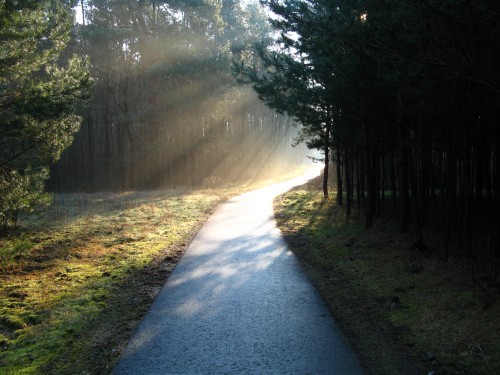 He draws us out to a place of hope.
He draws us out to a place of hope.
Early in the morning, Mary Magdalene went to the tomb where Joseph of Arimathea and Nicodemus had placed Jesus. Alarmed that Jesus’ body was gone, she ran to tell the disciples. Both Peter and John investigated the scene, but they left.
Mary remained.
Scripture does not tell us why she stayed. Angels inquire why she is weeping. “They have taken my Lord away…and I don’t know where they have put him” (John 20:13). The angels are silent.
She turns—seeing Jesus standing behind her, but she doesn’t recognize him.
’Woman,’” he said, ‘why are you crying? Who is it you are looking for?’ Thinking he was the gardener, she said, ‘Sir, if you have carried him away, tell me where you have put him, and I will get him.’ Jesus said to her, ‘Mary.’ She turned toward him and cried out in Aramaic, “Rabboni!” (John 20:15-16).
Why Jesus would have reserved His first resurrection appearance for women, specifically Mary Magdalene, Scripture doesn’t tell us. Perhaps her love was deeper, her need greater, or her faith in Him shone as allegiance evident beyond the grave.
I love how Jesus moves from the kind but impersonal address of “Woman” to a simple calling of her name. “Mary,” He says, making Himself known in this personal way. She knows Him instantly!
As a woman, I cherish this account. Who am I looking for?
Jesus who stands universally with women and men in our deepest sadness and greatest need, even when we do not recognize Him. On a personal level, Jesus meets me, His Word illuminating my gloomiest moments of rejection and pain; His voice reassuring me of His love; and His treating me with kindness, not as a second-class citizen of the Kingdom as women are sometimes made to feel.
When we encounter Jesus, He tenderly reassures that He knows us—by name.
For further study:
- What have you done with the claims of Christ?
- Do you investigate, believe, and walk away or do you remain by faith even when you don’t fully understand?
- Will you leave everything behind to be devoted to Him?
- When He calls your name, will you know His voice immediately?
For additional study: Matthew 4:18-20, 28:1-10; Mark 8:34-38; John 10:11-21
The Gospel according to Matthew (Condell Worship Series, Winter 2013)
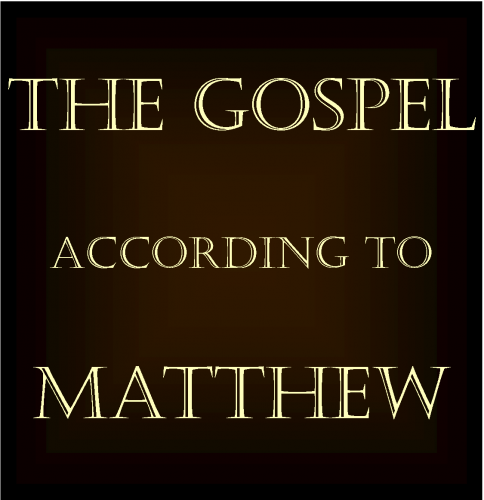 In our upcoming Winter Series at Advocate Condell Medical Center, we will work our way through the Gospel according to Matthew.
In our upcoming Winter Series at Advocate Condell Medical Center, we will work our way through the Gospel according to Matthew.
From Epiphany to the Resurrection, we will present Jesus as our promised Savior, “the shepherd of my people Israel.”
Note to local church presenters:
Since our goal is to present the life of Christ from birth to resurrection as the Gospel of Matthew does, please feel free to choose a passage of Scripture from within the range specified for that date and present the topic of your choice. I have suggested some for you, but the list is not exhaustive.
Thank you again for all you do for the patients and staff at Advocate Condell Medical Center!
Schedule for Winter Series 2013
| Date | Choose a passage from this section of Matthew | Speaker | Suggested topics or any another from the passage indicated |
| 6-Jan | Matthew 2:1-12 Epiphany | Barbara Shafer | Visit of the Magi |
| 13-Jan | Matthew 3 | Pastor Rick Sutton Lakeview Presbyterian in Vernon Hills | Baptism of Jesus |
| 20-Jan | Matthew 4 | Bill Slater | Temptation of Jesus |
| 27-Jan | Matthew 4 | Barbara Shafer | Calling of Disciples |
| 3-Feb | Matthew 5 | Barbara Shafer | The Beatitudes |
| 10-Feb | Matthew 6 | Libertyville Covenant | Living in light of Christ (Lent–Ash Wed Feb 13th) |
| 17-Feb | Matthew 7-8 | Bill Slater | Healing, cost of following Jesus, Jesus’ calming the storm |
| 24-Feb | Matthew 9-11 | Barbara Shafer | Come to me…I will give you rest for your souls |
| 3-Mar | Matthew 12 | First Presbyterian Church of Libertyville | Lord of the Sabbath, God’s chosen servant |
| 10-Mar | Matthew 13 | Barbara Shafer | Parables of Christ (also Mt 18, 20, 21, 22 or 25) |
| 17-Mar | Matthew 14, 16, 17 | Bill Slater | Jesus’ miracles: walking on water, feeding the multitudes, transfiguration |
| 24-Mar | Matthew 21 Palm Sunday | Barbara Shafer | Triumphal entry |
| 31-Mar | Matthew 27 Easter Sunday | Pastor Rick Sutton Lakeview Presbyterian in Vernon Hills | Death of Jesus and bodily resurrection |
Too Late to Plant Fall Bulbs?
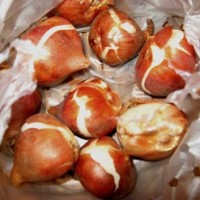 Put your question and your shame to rest. So, you’ve procrastinated like many gardeners. I’ve done it too. I’m pretty certain that among gardeners, we all sin and fall short of the calendar for planting fall bulbs at some point in our lives. Now the ground is approaching frozen and you ask,
Put your question and your shame to rest. So, you’ve procrastinated like many gardeners. I’ve done it too. I’m pretty certain that among gardeners, we all sin and fall short of the calendar for planting fall bulbs at some point in our lives. Now the ground is approaching frozen and you ask,
Is it too late to plant fall bulbs?
The answer is “Yes”…sort of. Once the ground is frozen, the bulbs won’t have time to root or to enter their winter rest in the normal way.
But also “No”–I never let the rules of nature foil my attempts to recover with grace. Redemption for your procrastination is indeed possible! Here are two techniques for dealing with those bags of bulbs that seemed so enticing at the store in September and now haunt your life as an October opportunity lost.
Technique 1: Pot them up. I do this by choice every year. There is no excuse for letting those bags of bulbs taunt you, reminding you of your high hopes and lackluster planting performance. I choose a pot that’s about a foot deep and large enough to accommodate a dozen or so bulbs. Break the rules about spacing that appear on the bag. If you’re going to break gardening rules, go big! One of the rare instances I’d advocate such a thing is in the area of gardening!
I place about 6 inches of soil in the bottom of a pot and put bone meal or Holland Bulb Booster on top. Then I add another 2 inches of soil and mix it well. Then I place the bulbs… (tulips with flat side toward the edge of the pot)…on top of the soil and then cover it with soil up to approximately one inch of the surface. Why the flat side, you ask? That way the leaves that emerge will gracefully arch over the outside edge and the flowers will be more upright and visible. True confession: I have been known to mix a few different kinds of bulbs to have an extended bloom time. I water the pots and place them in our unheated garage named Arkansas. Because Arkansas is unheated, the bulbs will have sufficient chilling to root first and then form their flowers deep inside the bulbs. And there they sit for weeks of growing underground and just plain chillin’.
Can’t I just put the bags of bulbs in the basement and plant them in the spring, you ask?
No way, posey! Storing bags of bulbs in the basement ignores that bulbs breathe and live throughout the winter during which the bulb will exhaust its food supply. When you go to plant it, the shell of a former bulb will gasp and give up its ghost. Don’t do it! Instead, pot them up and roots will form, drawing both moisture and nutrients to feed the bulb. In the spring you’ll have a lovely display that looks like this (right). My garden by the mailbox has two pots like this each spring.
Technique 2: Give them a cold treatment for forcing in water or soil. If you have a dark, cold place to chill them, they can be brought out of chilling in the late winter for beauty indoors. Some people like to put theirs in their refrigerator. Of course, I like to cook as well as garden and I do not have enough room in my refrigerator for bulbs among a bazillion leftovers. Plus, there’s the issue of ethylene gas produced by ripening fruits and vegetables which will stunt, deform, or otherwise inhibit flowers. What good is that? Isn’t that what everyone wants: a bunch of bulbs in the refrigerator all winter and nothing to show for it in the spring? Not me. I like my garage with the bulbs in paper grocery bags. Just keep them from freezing!
Different bulbs require different amounts of chilling.
|
Flower Bulb Type |
Chilling Time (approx. weeks at 40 degrees) |
|
Crocus |
14 |
|
Daffodil |
16 |
|
Hyacinth |
12 |
|
Snowdrop |
14 |
|
Tulip |
16 |
I particularly like hyacinths because they can be forced in special vases that suspend the chilled bulb above the surface of water for a delightful burst of spring fragrance. Low dishes with decorative stones are also nice, but the weight of the flower will typically topple it out of the low dishes. Of course, you can also plant the already chilled bulbs in pots to plop in the ground in the spring too!
One final note: Not all bulbs require chilling. Paperwhites (which have a fragrance that is both loved and reviled, not by the same people) and amaryllis need no chilling at all. They’re ready for action right out of the package.
So now you can recover with grace and lift your head from the shame of buying more bulbs than you had the energy, time, or initiative to plant in the early fall. You no longer have to consign your bulbs to the Halloween graveyard of forgotten bulbs. You can chill them and raise them to beauty in the spring…indoors and out!
Chapel Worship Guide 10.28.2012
Service Order for 9:00 AM Sunday, October 28, 2012
Nemmers Family Chapel at Advocate Condell
Welcome–Barbara Shafer, Christ Church Highland Park
Prayer
Scripture Reading:
Isaiah 40:9 You who bring good tidings to Zion, go up on a high mountain. You who bring good tidings to Jerusalem, lift up your voice with a shout, lift it up, do not be afraid; say to the towns of Judah, “Here is your God!” 10 See, the Sovereign LORD comes with power, and his arm rules for him. See, his reward is with him, and his recompense accompanies him. 11 He tends his flock like a shepherd: He gathers the lambs in his arms and carries them close to his heart; he gently leads those that have young. 12 Who has measured the waters in the hollow of his hand, or with the breadth of his hand marked off the heavens? Who has held the dust of the earth in a basket, or weighed the mountains on the scales and the hills in a balance? 13 Who has understood the mind of the LORD, or instructed him as his counselor? 14 Whom did the LORD consult to enlighten him, and who taught him the right way? Who was it that taught him knowledge or showed him the path of understanding? 15 Surely the nations are like a drop in a bucket; they are regarded as dust on the scales; he weighs the islands as though they were fine dust. 16 Lebanon is not sufficient for altar fires, nor its animals enough for burnt offerings. 17 Before him all the nations are as nothing; they are regarded by him as worthless and less than nothing. 18 To whom, then, will you compare God? What image will you compare him to? 19 As for an idol, a craftsman casts it, and a goldsmith overlays it with gold and fashions silver chains for it. 20 A man too poor to present such an offering selects wood that will not rot. He looks for a skilled craftsman to set up an idol that will not topple. 21 Do you not know? Have you not heard? Has it not been told you from the beginning? Have you not understood since the earth was founded? 22 He sits enthroned above the circle of the earth, and its people are like grasshoppers. He stretches out the heavens like a canopy, and spreads them out like a tent to live in. 23 He brings princes to naught and reduces the rulers of this world to nothing. 24 No sooner are they planted, no sooner are they sown, no sooner do they take root in the ground, than he blows on them and they wither, and a whirlwind sweeps them away like chaff. 25 “To whom will you compare me? Or who is my equal?” says the Holy One. 26 Lift your eyes and look to the heavens: Who created all these? He who brings out the starry host one by one, and calls them each by name. Because of his great power and mighty strength, not one of them is missing. 27 Why do you say, O Jacob, and complain, O Israel, “My way is hidden from the LORD; my cause is disregarded by my God”? 28 Do you not know? Have you not heard? The LORD is the everlasting God, the Creator of the ends of the earth. He will not grow tired or weary, and his understanding no one can fathom. 29 He gives strength to the weary and increases the power of the weak. 30 Even youths grow tired and weary, and young men stumble and fall; 31 but those who hope in the LORD will renew their strength. They will soar on wings like eagles; they will run and not grow weary, they will walk and not be faint.
John 10: 11 “I am the good shepherd. The good shepherd lays down his life for the sheep. 12 The hired hand is not the shepherd who owns the sheep. So when he sees the wolf coming, he abandons the sheep and runs away. Then the wolf attacks the flock and scatters it. 13 The man runs away because he is a hired hand and cares nothing for the sheep. 14 “I am the good shepherd; I know my sheep and my sheep know me– 15 just as the Father knows me and I know the Father– and I lay down my life for the sheep. 16 I have other sheep that are not of this sheep pen. I must bring them also. They too will listen to my voice, and there shall be one flock and one shepherd. 17 The reason my Father loves me is that I lay down my life– only to take it up again. 18 No one takes it from me, but I lay it down of my own accord. I have authority to lay it down and authority to take it up again. This command I received from my Father.”
Sermon: “Paradox of Grace: The Divine Shepherd”—Barbara Shafer
1: The Paradox of God’s arm (Isa 40:9-11). God’s arm breaks the powerful and He gathers the broken. This act of grace is seen in Jesus’ coming to us and laying down His life for us.
2: The Paradox of God’s nature (Isa 40:12-26). He’s transcendent and personal. This unmerited favor in Jesus Christ is God’s grace toward us.
3: The Paradox of God’s ways (Isa 40:27-31). The Divine Shepherd is our source of hope. He has the divine power to come as Emmanuel (God with us) to be the good shepherd and to lay down his life for the sheep as the Lamb of God…the sacrifice for our sins so we might be forgiven.
Benediction
How to Overwinter Tree Roses
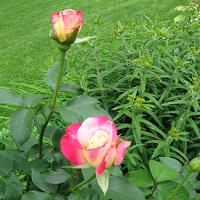 Roses are among the most beloved plants. Matchless for their variety of colors and fragrance and forms, roses have a beauty that makes their persnickety nature part of their charm. Roses need special pruning and fertilizing and insect prevention, but they also need strict attention to their fall and winter care. (Please note update at the end 5.3.2013)
Roses are among the most beloved plants. Matchless for their variety of colors and fragrance and forms, roses have a beauty that makes their persnickety nature part of their charm. Roses need special pruning and fertilizing and insect prevention, but they also need strict attention to their fall and winter care. (Please note update at the end 5.3.2013)
Last year, I took some photos as I was preparing to overwinter my rose. My ‘Double Delight’ tree rose is even more demanding with regard to its care than bush roses I also grow in pots.
Here is how I overwinter my tree rose:
Step 1: Cease fertilizing roses 2 months before overwintering. The first killing frosts in my area are mid-October so an August 15th deadline gives two full months for my roses to wind down and become convinced that it’s really OK with me for them to go dormant for the winter.
Roses, for all their complicated care, have a strong desire to grow even into the frosts. No fertilizer, no pruning, and full exposure to cold temperatures/frosts tell them that they need to rest now. While they’re in their two-month cool down, I dig a trench in my compost pile (which is more like a pile of leaves than a true compost pile). The trench will need to be big enough to accommodate the tree rose laying on its side and whatever other roses I’ve been growing in pots.
Step 2: Once the hard frosts have hit a time or two, I can safely prune them. The leaves and flowers often have a dull purplish tone to them showing that they have been exposed to sufficient cold. Roses already know it’s time to shut down for the season, so when I prune them for the winter’s covering, they just accept it and don’t rebel against it by trying to grow some more. They are obedient roses. Tree roses get pruned differently than a bush rose so my photos will demonstrate their winter care.
All non-landscape roses have a “graft union” (place where the pretty rose variety was plugged into the sturdy root stock). For bush roses, it is located at the ground level and this graft union can be covered with soil or mulch. I’m particular to pine bark mini-nuggets because they still pour when frozen and stay put during the winter. The added benefit is the way they become part of the spring/summer mulch when I wash them away from the graft union.
Tree roses are different. A standard form or tree rose has a root zone, a tall stalk that’s part of the rootstock, and the graft union is at the top of the root stock. Since the graft union is what needs protecting, covering the roots with mulch does no good whatsoever for preserving the graft union.
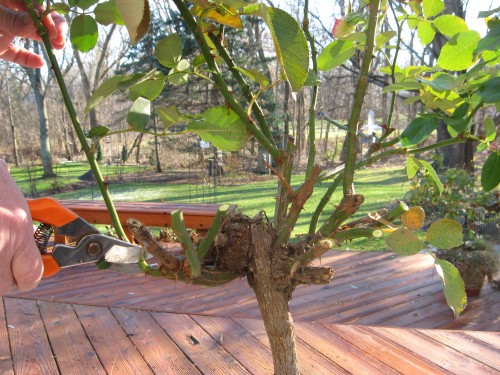 The knotty looking section with stems coming out is called the graft union. With bush roses, I’m content to leave the canes about 12-18 inches long. Not so with tree roses. I clip them back to about 3 inches from the graft union. Otherwise the new growth in the spring will be long and so heavy that the weak juncture will break off easily. So I try to keep the spring growth compact. It begins in the fall as I cut away the dead canes completely and the green canes get clipped to approximately 3 inches in length. I use sharp pruning shears that have been treated with bleach so I don’t contaminate the rose for its winter rest.
The knotty looking section with stems coming out is called the graft union. With bush roses, I’m content to leave the canes about 12-18 inches long. Not so with tree roses. I clip them back to about 3 inches from the graft union. Otherwise the new growth in the spring will be long and so heavy that the weak juncture will break off easily. So I try to keep the spring growth compact. It begins in the fall as I cut away the dead canes completely and the green canes get clipped to approximately 3 inches in length. I use sharp pruning shears that have been treated with bleach so I don’t contaminate the rose for its winter rest.
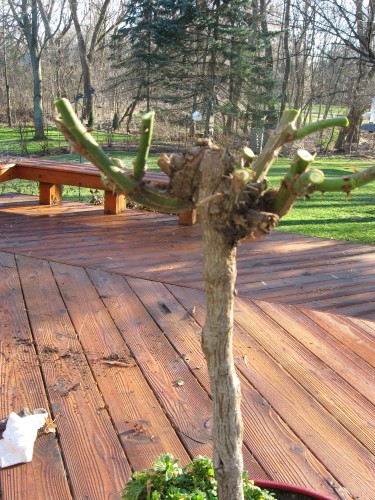 Step 3: Once it is pruned, it looks very naked, I know. But it will have less to try to maintain through the winter. It may sound strange, but plants stay alive through the winter even as they are dormant. If you have a large plant to try to keep alive, it will expend more of its stored food trying to keep it all alive…and it may end up killing the whole plant in the process.
Step 3: Once it is pruned, it looks very naked, I know. But it will have less to try to maintain through the winter. It may sound strange, but plants stay alive through the winter even as they are dormant. If you have a large plant to try to keep alive, it will expend more of its stored food trying to keep it all alive…and it may end up killing the whole plant in the process.
You’ll notice I removed all the leaves which–at this point–will only be a source of disease inoculum for next year. Even so, there may be some organisms on the canes, so I usually do one last spray of insecticide before wrapping it up.
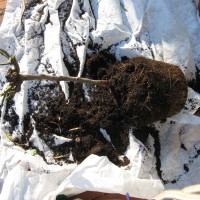 Step 4: Wrapping the rose for winter storage (left).
Step 4: Wrapping the rose for winter storage (left).
While I could just bury the rose in its pot, I prefer to take it out of the pot so rain and melting snow can keep the root zone hydrated. Both the roots and the graft union need to be protected and with a long stalk, it risks being broken in addition to frozen. Therefore, I take the extra step of wrapping it in frost cloth. Both air and water can permeate it, but the rose will stay substantially cleaner and will make it less attractive for mice than if it were just buried among all the leaves. Furthermore, wrapping the whole rose in frost cloth helps to make its removal in the spring less likely to break anything, whether the stalk or the graft union/new buds.
Step 5: Cover the wrapped tree rose in the trench with leaves. Of course, the trench I’ve already prepared in the back and the neatly wrapped rose don’t look too good in the photo with both roots and graft union ready to be covered. Should the police wonder what I’m burying, we could always open it to reveal nothing but the rose inside. Last year my son had a few laughs at my expense as we went out and buried it. But, I got the last laugh this spring when I unearthed it.
 Step 6: In the early spring, I unearth my tree rose and place it in a sheltered spot. If it’s too cold outside still, I’ll put it in the garage. I don’t want to leave it in the compost pile and have the leaf buds begin to “break” in the dark. But I also don’t want to have gone through significant effort to overwinter it only to have it zapped by a late winter cold snap. Unearthing it while it’s still dormant will allow it to develop naturally as the weather improves. I pot it up, water it, and as the daylengths increase and the buds swell and break, I begin to fertilize it again.
Step 6: In the early spring, I unearth my tree rose and place it in a sheltered spot. If it’s too cold outside still, I’ll put it in the garage. I don’t want to leave it in the compost pile and have the leaf buds begin to “break” in the dark. But I also don’t want to have gone through significant effort to overwinter it only to have it zapped by a late winter cold snap. Unearthing it while it’s still dormant will allow it to develop naturally as the weather improves. I pot it up, water it, and as the daylengths increase and the buds swell and break, I begin to fertilize it again.
My “Double Delight” tree rose began to experience bud break soon after unearthing/repotting it and it produced blossoms that were absolutely stunning this year. By way of note, the stalk will not get taller. The height you buy it is the height the standard (stalk portion) will remain. The growth will be in the canes that arise from the graft union. Bush roses can be grown in pots and overwintered the same way or planted in the ground (in their frost-proof pots) for the winter. Landscape roses such as “Carefree Wonder”, many rugosa roses, “The Fairy”, drift or “Knockout” roses do not need this special care since they are hardier and not grown as grafted plants. If you love roses but hate the maintenance, these “own root roses” are good options to try.
But for those of us who desire tree roses, we don’t mind that they are higher maintenance plants. These jewels among jewels of the garden are well worth the extra care they require. There is something marvelous about a reward of such beauty after a long labor of love. It’s kind of a nice reflection in nature of the same beauty and reward of the Christian life well-lived.
==== Important update (5.3.2013) For the first time in the decade I’ve been overwintering my roses this way, this year my roses were eaten by voles (a type of mouse). Each of them looked like they had been put in an electric pencil sharpener and gnawed to a point. I am attempting to root them (since there was remaining root stock below the graft union). I’m not sure how well that will work since the bark appears to have been stripped all the way to the cambial layer, but I’ll keep you updated.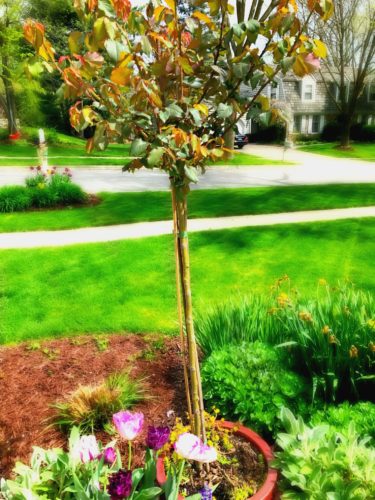
(2013) So this year when I overwinter my roses, it will include using hardware cloth (wire mesh with 1/4″ holes) to keep the voles from breaking my heart again next year. As I wrap them in hardware cloth, I’ll include photos of that too.
That was ineffective as the voles found their way in, so last winter (2016-2017) I kept it in the garage. I watered it periodically with cold water and kept the lights on in the garage to provide a little heat on the coldest of nights. The result was a resounding success. Cutting it back just as shown in the earlier photos, I placed it outside after danger of frost (putting it on the front porch tucked next to the house, if frost threatens). Here is how it turned out. It will be spectacular when it blooms. I also did some containerized bush roses that way and they’re every bit as ready to burst into bloom!
Chapel Worship Guide 10.21.2012
Service Order for 9:00 AM Sunday, October 21, 2012
Nemmers Family Chapel at Advocate Condell
Welcome–Barbara Shafer, Christ Church Highland Park
Worship in Song with Carl Festin and Jean Gray, Village Church of Gurnee
Hymn 561: Day by Day
What the Lord Has Done in Me – Reuben Morgan
Hymn 11: A Mighty Fortress
Prayer– Bill Slater, http://billslaterministries.org
Scripture Reading (NIV): 2 Samuel 7:8 “Now then, tell my servant David, ‘This is what the LORD Almighty says: I took you from the pasture and from following the flock to be ruler over my people Israel. 9 I have been with you wherever you have gone, and I have cut off all your enemies from before you. Now I will make your name great, like the names of the greatest men of the earth. 10 And I will provide a place for my people Israel and will plant them so that they can have a home of their own and no longer be disturbed. Wicked people will not oppress them anymore, as they did at the beginning 11 and have done ever since the time I appointed leaders over my people Israel. I will also give you rest from all your enemies. “‘The LORD declares to you that the LORD himself will establish a house for you: 12 When your days are over and you rest with your fathers, I will raise up your offspring to succeed you, who will come from your own body, and I will establish his kingdom. 13 He is the one who will build a house for my Name, and I will establish the throne of his kingdom forever. 14 I will be his father, and he will be my son. When he does wrong, I will punish him with the rod of men, with floggings inflicted by men. 15 But my love will never be taken away from him, as I took it away from Saul, whom I removed from before you. 16 Your house and your kingdom will endure forever before me; your throne will be established forever.'”
Sermon: “The Past, Present, Future, and Eternal King”—by Bill Slater
Songs of Response:
Hymn 85: Crown Him with Many Crowns
Son of David – written and performed by Carl Festin
Benediction — Bill Slater
What to Do About Hydrangeas?
 Hydrangeas can be confusing at nearly every season. Fall confusion produces as many questions as spring confusion.
Hydrangeas can be confusing at nearly every season. Fall confusion produces as many questions as spring confusion.
In the fall, people in the northern United States look at their hydrangeas and wonder, “Now what?”
Winter is coming.
Do I cut my hydrangeas back?
Do I let them go just as they are?
Everyone has advice. I’ll offer you mine and also point you to some really excellent web sites on hydrangeas (look for the links).
Most of the confusion can be resolved by knowing which hydrangea you have and where you live (check this hardiness zone map). One web site that has a nice, easy-to-understand description has a Hydrangea Identification page. It will help you to discern whether or not yours is:
- a big leaf (H. macrophylla, also called Mophead or Lace Cap) which is commonly offered in various blue and pink forms and often can be color changed by altering soil pH.
- oakleaf (H. quercifolia) which is native to the southeastern US,
- Peegee (H. paniculata) which is native to Japan/China and has flowers that are elongated panicles rather than rounded, or
- “Annabelle’ type (H. arborescens) which have the large white ball-like flowers. ‘Annabelle’ is the most famous of this class of hydrangea.
You’ll notice I listed them all as H. (which stands for Hydrangea) and then a different name second. That’s because like a family all has the same last name and your first name distinguishes who in your family is being discussed, so the Latin second name refers to a specific species within a genus (the name Hydrangea). How you care for hydrangeas depends on how hardy yours is and whether it characteristically blooms on old wood (last year’s growth) or new wood (current year’s growth). In any case, I stop all fertilizing of hydrangeas and roses after August 15th to convince these plants to enter dormancy.
Among the ones that bloom on new wood are Endless Summer, H. paniculata such as Limelight, and H. arborescens “Annabelle”. Because these bloom on new wood, the current season’s growth, they can be pruned at any time, although late fall (after a few hard frosts) ensures they won’t try to continue putting out new growth and instead will enter dormancy. Endless Summer will produce better/ more profuse blossoms if the spent flowers are removed. If your Endless Summer are still smaller in size, you can just let them go through the winter, no pruning needed at all. If yours are larger, you can prune them back, but it’s not necessary. The grower has a nice winter care guide. “Annabelle” is prized for its large white blossoms, but it can be cut down severely in the fall which helps it to maintain a better shape and sturdier habit for the following year (unless you prefer your Annabelle flowers bent over into your mulch, but frankly she deserves better than facedown in the dirt).
Old wood: most of the other macrophylla (big leaf) and quercifolia (oak leaf) types must be pruned immediately after flowering as by fall, they’ve set their flower buds. Lilacs, azaleas, rhododendrons, and many viburnums do the same thing. Pruning these in the fall will cut off all the flower buds. So how do I overwinter my macrophylla “Nikko Blue” and some so-called Color Change that aren’t actually hardy in my area? I bought all of these knowing that they are marginally hardy and would die back down to their roots in Chicagoland. I brought back my “Nikko Blue” from New Jersey many years ago as a sentimental family favorite and my “Color Change” were a carryover from some pots I’d planted at church. I couldn’t bear to throw them out when I switched the pots to mums and winter evergreens and decided to give these hydrangeas a whirl in my garden. The first year in the ground neither of these bloomed because they died too far back in the winter. While hydrangea foliage is attractive enough, it misses the whole point of the beauty of the flowers! I learned my lesson so now…
This is how I overwinter my marginally hardy macrophyllas:
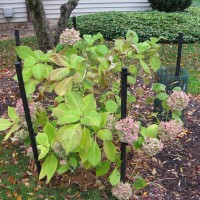
Step 1: I stake the area around my hydgrangea while the ground is not frozen (left). But covering hydrangeas before they go dormant doesn’t help them. Make sure that there have been a few hard frosts before continuing.
Step 2: I surround my plant with rabbit fencing to create a corral (right) and begin to place the last of the fall leaves around the base of the plant as we get hard frosts.
Step 3: I slowly and gently pile leaves from the center out to the tips of the plant to bend the stalks without breaking them (left).
Eventually the entire plant will be covered with a layer of leaves and I put some netting over the top to keep the leaves from blowing away during the winter. Of course, this makes a mess for removal in the early spring time after the coldest of winter days have passed. I remove the stakes, unwind the corral, and then the leaves used as cover slide easily from the center outward. The leaves may be slimy and partly decomposed, but they’ve served their function of blanketing the stalks through the coldest winter days.
While this method has worked beautifully to have abundant flower buds survive a Chicagoland winter, it’s important to note that I remove the leaves before the buds “break” (start to unfurl) so that the leaves don’t rot and so the buds don’t send out tender new growth to get zapped by late frosts. I keep my eyes on the forecast because after uncovering the bud-filled branches, I may need to cover them with frost cloth if we are due to dip below their hardiness. Once the leaves are removed, the buds will need to adjust to the unsheltered conditions…just as they would in areas of the country where they are fully hardy.
In the spring, after I see where the strongest growth is maintained and where the deformed (damaged) buds begin, I prune the stalk into the strong growth section. This ensures that I will have the maximum number of flower buds, but not have the tips stunted by damaged growth. It may seem like a lot of work to go through, but the reward is well worth it if you’re trying to grow certain macrophylla hydrangeas at the northern end of their hardiness.
The newer macrophylla varieties like Endless Summer have achieved great popularity because they have all the benefits of the beauty of the big leaf varieties without the hassle of overwintering. They’re well worth the price in both beauty and hardiness. But now, at least, you have an option to try if you’re trying to grow macrophyllas north of their normal hardiness.
An Amazing Remembrance
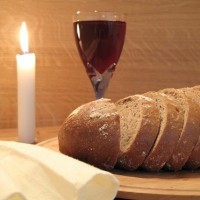 1 Corinthians 11:23 For I received from the Lord what I also passed on to you: The Lord Jesus, on the night he was betrayed, took bread, 24 and when he had given thanks, he broke it and said, “This is my body, which is for you; do this in remembrance of me.” 25 In the same way, after supper he took the cup, saying, “This cup is the new covenant in my blood; do this, whenever you drink it, in remembrance of me.” 26 For whenever you eat this bread and drink this cup, you proclaim the Lord’s death until he comes. 27 Therefore, whoever eats the bread or drinks the cup of the Lord in an unworthy manner will be guilty of sinning against the body and blood of the Lord. (NIV)
1 Corinthians 11:23 For I received from the Lord what I also passed on to you: The Lord Jesus, on the night he was betrayed, took bread, 24 and when he had given thanks, he broke it and said, “This is my body, which is for you; do this in remembrance of me.” 25 In the same way, after supper he took the cup, saying, “This cup is the new covenant in my blood; do this, whenever you drink it, in remembrance of me.” 26 For whenever you eat this bread and drink this cup, you proclaim the Lord’s death until he comes. 27 Therefore, whoever eats the bread or drinks the cup of the Lord in an unworthy manner will be guilty of sinning against the body and blood of the Lord. (NIV)
Do this in remembrance of me.”
On the very night He would be betrayed by those He came to save, the Lord Jesus gave us a way of remembering Him.
This way remembers His death.
Most of us cherish memories of the life of our loved ones—happy times we had together, favorite places we would go, vacations we took, laughter we shared, or hobbies we enjoyed with them.
What does Jesus want?
He wants us to cherish His death—indeed, to proclaim it.
Isn’t it strangely beautiful? Rather than asking us to remember happy things we could only know second-hand from reading Scripture, the Lamb of God—Jesus Christ—shows us that His sacrificial death is for us, in whatever age we live.
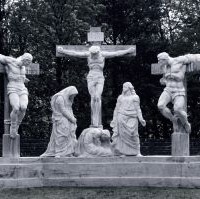 In a sense, we transcend time because we were there in the betrayal as far back as Eden.
In a sense, we transcend time because we were there in the betrayal as far back as Eden.
We were there in spirit the night Jesus was betrayed.
We were alongside those shouting, “Crucify Him!,” not knowing what we were doing.
We share in the inheritance of sinners.
But followers of Christ also share in salvation’s beautiful hope by the blood of the Lamb: His death for us.
So, Jesus calls us to communion with Him as we share the bread and cup and remember His death.
While they were eating, Jesus took bread, gave thanks and broke it, and gave it to his disciples, saying, ‘Take and eat; this is my body.’” (Matthew 26:26)
In the Garden of Eden, we took and ate…and received separation from God. In the Passover, Jesus says, “Take and eat” and by the New Covenant in His blood, He restores us to fellowship with our Father. Come to Jesus’ table and come to the Cross where love and judgment meet.
Unlike some pilgrimage to a distant holy site, this coming home to our Father is inward. We transcend our generation through a timeless fellowship meal during which we proclaim Jesus’ death.
It’s a spiritual pilgrimage to the heart where His death whispers salvation to all who hear and believe. This is My body, broken for you. This is My blood, shed for you. A simple act. A simple meal. Yet what an amazing remembrance!
======
Questions:
- Imagine having to pack up for a trip to a designated location once a year to worship God. How is the Passover meal more accessible to everyone in the world?
- Are there ways in which the concept of eating the body and drinking the blood of Christ seems repulsive? Why do we feel that way?
- The Passover Meal we celebrate as Communion is sometimes called The Eucharist (coming from the Greek word meaning “give thanks” and closely related to the word meaning “grace”). Ponder the many ways in which the terms Eucharist and Communion are appropriate.
=====
Chapel Worship Guide 10.14.2012
Service Order for 9:00 AM Sunday, October 14, 2012
Nemmers Family Chapel at Advocate Condell
Welcome–Barbara Shafer, Christ Church Highland Park
Scripture Reading: Isaiah 11:1 A shoot will come up from the stump of Jesse; from his roots a Branch will bear fruit. 2 The Spirit of the LORD will rest on him– the Spirit of wisdom and of understanding, the Spirit of counsel and of power, the Spirit of knowledge and of the fear of the LORD– 3 and he will delight in the fear of the LORD. He will not judge by what he sees with his eyes, or decide by what he hears with his ears; 4 but with righteousness he will judge the needy, with justice he will give decisions for the poor of the earth. He will strike the earth with the rod of his mouth; with the breath of his lips he will slay the wicked. 5 Righteousness will be his belt and faithfulness the sash around his waist.
Romans 15: 5 May the God who gives endurance and encouragement give you a spirit of unity among yourselves as you follow Christ Jesus,6 so that with one heart and mouth you may glorify the God and Father of our Lord Jesus Christ. 7 Accept one another, then, just as Christ accepted you, in order to bring praise to God. 8 For I tell you that Christ has become a servant of the Jews on behalf of God’s truth, to confirm the promises made to the patriarchs 9 so that the Gentiles may glorify God for his mercy, as it is written: “Therefore I will praise you among the Gentiles; I will sing hymns to your name.” 10 Again, it says, “Rejoice, O Gentiles, with his people.” 11 And again, “Praise the Lord, all you Gentiles, and sing praises to him, all you peoples.” 12 And again, Isaiah says, “The Root of Jesse will spring up, one who will arise to rule over the nations; the Gentiles will hope in him.”
Prayer– Barbara Shafer
Sermon: “A Righteous Branch of Jesse”—Barbara Shafer
In Isaiah 11:1-5, we see 4 secrets revealed about who the Messiah will be. We see His:
- ancestry…the stump of Jesse (v. 1)
- anointing (v 2)
- attributes reflecting His character (v.3-4)
- actions of adjudication (v.3-5)
Benediction — Barbara Shafer
Romans 15:13 May the God of hope fill you with all joy and peace as you trust in him, so that you may overflow with hope by the power of the Holy Spirit.

